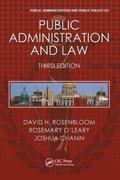Question
ma 090 Suppose there are two large grain elevators (consolidators) in Iowa that buy all of the wheat from many small farmers and sell it
ma 090
Suppose there are two large grain elevators (consolidators) in Iowa that buy all of the wheat from many small farmers and sell it on the world market at the price > 100. The aggregate supply curve among the farmers is S(p)-p-100, where p is the local price of wheat (Le, the price the Cevators pay), and this is known by the elevators. Prior to the start of the planting season, the elevators (buyers-duopsonists) announce their demands (the quantities they wish to purchase), and the local price is determined to clear the market, that is, to elicit the aggregate quantity demanded from the farmers. The buyers thus act as middlemen, and their objective is to maximize the difference between the value of their sales and the value of their purchases.
(a) Determine the equilibrium demands of the elevator operators.
(b) Discuss the effect of an increase in p on the equilibrium quantities, local price, and profits of the elevators.
(c) Suppose all of the wheat is sold abroad and foreign governments impose a tariff t on U.S. wheat imports. Assuming those countries can continue to buy wheat from other sources at the price p, how would this affect the equilibrium quantities and local price?
(d) Now suppose there is a domestic market for Iowa's wheat with market demand given by D(p) = 200-p, where p is the price elevators receive. Assuming the elevators sell their entire stock domestically, they then act as duopsonists in the local market and duopolists in the domestic or national market for Iowa wheat. Determine the amounts they will purchase locally and sell nationally and the prices at which they would do so, i.e., p and p'.
(e) Now suppose the elevators can sell in both the domestic market as in part d and internationally (without the tariff) as in part a. Formulate the (Nash) decision
address all questions
Write short notes on the following fundamental concepts:
Scarcity and Choice
Opportunity cost
Production possibility frontier
Positive and normative economics
Using examples, explain 'Ceteris Paribus' as used in economics
i) Why is the consumer said to be sovereign
ii) What factors limit this sovereignty?
Consider an economy with three consumers, three different inputs and three different outputs. Each consumer i is initially endowed only with one unit of input i (time for labor of type 1) and consumes only output i (i=1,2,3). The consumers live on a circle, facing inward, and each consumer can use its input to produce the output it consumes and/or to produce the output that is consumed by its neighbor to the left (clockwise along the circle). Formally, consumer i (i=1,2,3) can use 20 units of input i to produce f, units of output i and can use L, 20 units of input i to produce 21 units of output i+1, where f. + L, 1. Here, "output 4" is another name for output 1 and "consumer i = 4" is another name for consumer 1
consumer is less productive in producing its own output than in producing the output consumed by its neighbor.) Consumer i gets utility z, by consuming z, 20 units of good i.
(a) Specify the set of feasible allocations for this economy, assuming that there is free disposal of all goods. Use the notation above and any other notation you need, defining any notation you introduce.
(b) Suppose that the consumers are not able to trade. They can only produce (using their own initial endowments) and consume. What are their optimal input, output and consumption choices?
(c) Suppose, instead, that any two consumers can freely trade any goods with each other. Each consumer i is still the only consumer able to produce output using input i. Assume that trading does not use up any resources (either inputs or outputs). No consumer is forced to trade and no trade by a pair of consumers occurs if it reduces a consumer's utility. What trades might consumer 2 make with consumer 3 that both consumers would agree to, with no involvement of consumer 17 What trades might consumer 2 make with consumer 1 that both consumers would agree to, with no involvement of consumer 3? What conclusion can you draw about the final allocation if the only possible trades are bilateral (between two consumers, without involvement of the third)? Explain.
(d) The economy can be viewed as a private ownership economy in which each con sumer i owns firm i, which has the production possibilities of consumer i. Specify the production set of firm 2 in this private ownership economy.
1- In the monetary intertemporal model seen in class, explain and illustrate graphically how decreases in z and z' affect the economy using output supply and demand, labour supply and demand and money supply and demand. (Assume that the direct effect of a decrease in z on the supply of goods is larger that the anticipated decrease in future TFP, z').
2- Explain the effects on real interest rate, wages, aggregate output, prices, employment, consumption, and investment
3- Suppose that the government decides to print money to finance a lump sum transfer of money to the representative consumer. Explain and illustrate graphically what would happen in the goods market, output market and money market as a result of this one-time printing of money.
Step by Step Solution
There are 3 Steps involved in it
Step: 1

Get Instant Access to Expert-Tailored Solutions
See step-by-step solutions with expert insights and AI powered tools for academic success
Step: 2

Step: 3

Ace Your Homework with AI
Get the answers you need in no time with our AI-driven, step-by-step assistance
Get Started


